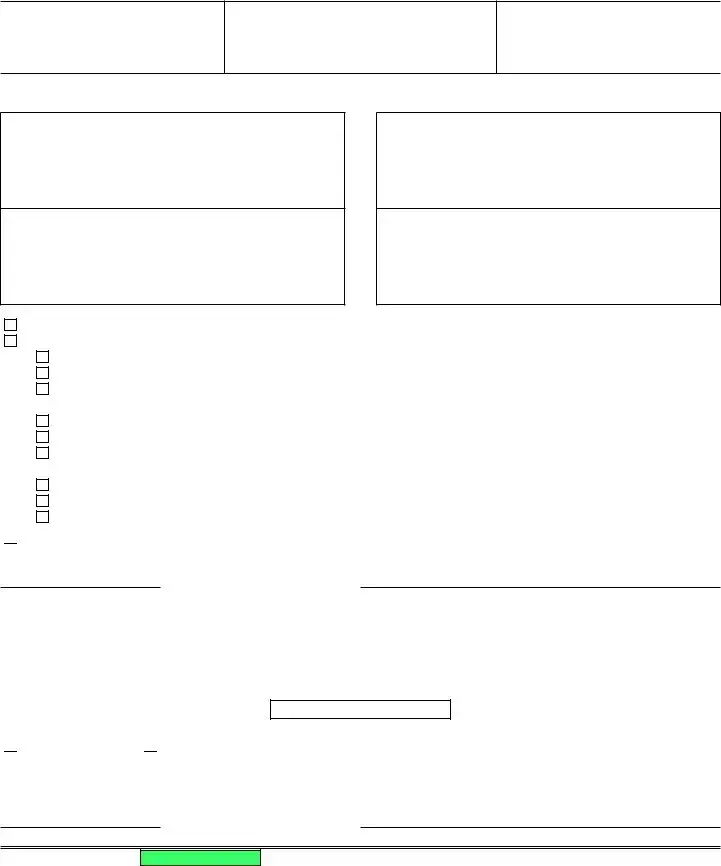Filling out the Michigan Civil form (Form MC 03) correctly is essential for those who have received a complaint and are required to file an answer in court. Unfortunately, there are several common mistakes people often make during this process. One prevalent error is not adhering to the deadlines specified for filing an answer. As the instructions highlight, the timeframe to file a written answer varies depending on the method of service. Failing to file within 21 days if personally served, or 28 days if served by mail or outside the state, can lead to a default judgment against the defendant.
Another frequent mistake is incorrect or incomplete information on the form. Individuals sometimes mistakenly enter incorrect case numbers, court addresses, or party details, misaligning their answer with the case at hand. This discrepancy can cause delays or the refusal of the document by the court. It is critical to ensure that all information entered on Form MC 03 matches the details provided in the court paperwork accurately.
A third mistake involves responses to the numbered statements in the complaint. Some individuals check more than one box in response to a single statement or fail to provide a reason when they disagree with a statement. Only one box should be checked for each statement, and any disagreement must include a succinct explanation.
Moreover, failing to properly address affirmative defenses is another common oversight. The form expressly states the need to list affirmative defenses using the last page. Not stating them at this stage can prohibit a defendant from raising them later in the court process. Affirmative defenses are crucial as they present the defendant’s side of the story that might not be evident from the plaintiff’s complaint alone.
Additionally, a significant number of people forget to make the necessary copies of the completed answer form before filing it with the court. The instructions mandate making four copies, filing the original, serving one copy on the plaintiff or their attorney, filing another copy with the court after service, and keeping one for personal records.
Improper service of the answer on the plaintiff or their attorney is yet another pitfall. Proper service ensures the plaintiff is officially aware of the defendant’s answer and intentions to contest the complaint. The process involves either personal delivery or mailing it to the last-known address and completing the certificate of service at the form’s end.
Last but not least, many overlook the importance of bringing all supporting documents to the hearing. The form note emphasizes the necessity of having all documents that support the answer ready for presentation at the hearing. Neglecting this can severely undermine one’s defense.
To avoid these errors, it is vital to read the instructions carefully, provide accurate and complete information, adhere to deadlines, and properly prepare for the hearing. This meticulous approach can significantly impact the outcome of the civil case.


 continued on page 2.
continued on page 2.
 personal service
personal service 



 continued on page 3.
continued on page 3.

 continued on additional page(s).
continued on additional page(s).
 1. I paid this debt in full (satisfied). Attached is proof of payment.
1. I paid this debt in full (satisfied). Attached is proof of payment. 
 2. This action is barred by the statute of limitations because
2. This action is barred by the statute of limitations because
 3.
3. 
 I paid an amount that the plaintiff accepted as payment in full (accord and satisfaction). Attached is proof of payment.
I paid an amount that the plaintiff accepted as payment in full (accord and satisfaction). Attached is proof of payment.
 5. The contract was severely unjust or extremely
5. The contract was severely unjust or extremely 
 6. I am not liable for the alleged damages because of the plaintiff’s contributory negligence.
6. I am not liable for the alleged damages because of the plaintiff’s contributory negligence.
 7. The alleged contract is unenforceable because it is not in writing (statute of frauds).
7. The alleged contract is unenforceable because it is not in writing (statute of frauds).
 8. My vehicle was repossessed and later sold in a commercially unreasonable manner. MCL 440.9607(3).
8. My vehicle was repossessed and later sold in a commercially unreasonable manner. MCL 440.9607(3).
 9. The contract should not be enforced because of the plaintiff’s improper conduct (fraud and/or duress).
9. The contract should not be enforced because of the plaintiff’s improper conduct (fraud and/or duress).
 10. The goods purchased were defective (failure of consideration).
10. The goods purchased were defective (failure of consideration).
 11. The terms of the contract did not express what the parties intended (mutual mistake).
11. The terms of the contract did not express what the parties intended (mutual mistake). 12. I have not been credited for all payments made on the alleged account. Attached is proof of payment.
12. I have not been credited for all payments made on the alleged account. Attached is proof of payment. 
 13. Other:
13. Other: